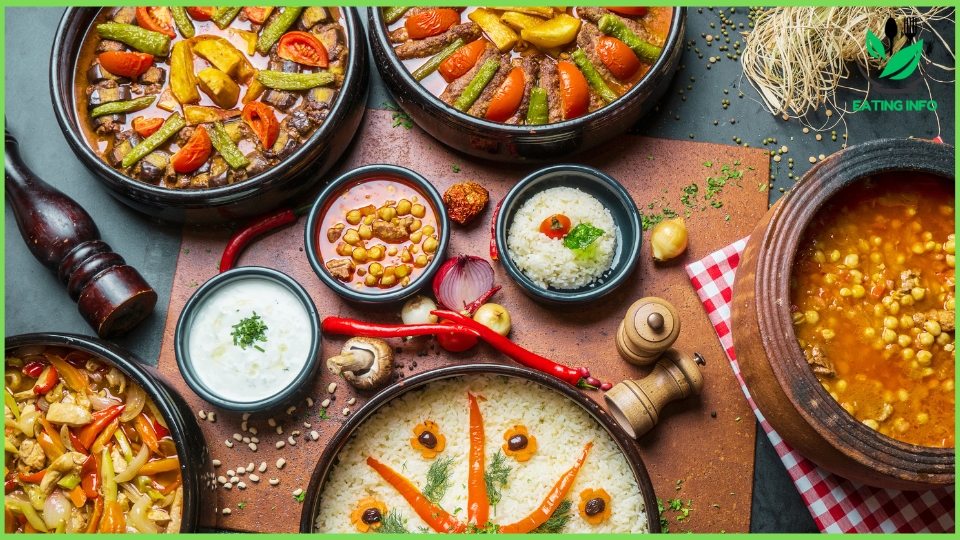Food is not merely a way of survival; it is the universal language that makes us travel far away to the other side of the world through flavor. Each meal is an opportunity to communicate, share one story, and build bridges across society. The following paper focuses on the ways global cuisine is culturally included, fosters cross-cultural exchange, and builds our shared future.
Food in Cultural Identity
2.1 Historical Developments of Cultural Cuisine
Food is inseparable from culture and history; every dish has a story to tell about the past of the community. Indeed, the origins of many foods can be traced back to ancient times when they evolved over the centuries due to such influences as trade, conquest, and migration.
2.2 Food as Representation of Local Traditions
Food often reflects local traditions within a community. It plays a central role in cultural rituals-from religious observance to seasonal festivals-and may convey heritage and identity.
2.3 The Role of Geography in Food
Geography plays a large role in the way cuisine is developed in a region. This all pertains to ingredients available, climate conditions, and landscape.
How Globalization Affects Food Traditions
3.1 Dissemination of Ingredients and Techniques
Globalization has encouraged the distribution of foodstuffs and cooking methods across the world, culminating in a meeting of cuisines. This type of exchange has enriched international cuisine and made it even more diversified and accessible.
3.2 Blending of Cuisines
The meal that came to be represented through the term “fusion cuisine” is the product of globalization, as it blends different culinary traditions into something new. Fusion cuisine reflects how cultures influence each other in the creation of new, innovative dishes for people’s enjoyment across the world.
3.3 Challenges of Preserving Traditional Cuisines
Notwithstanding the benefits of globalization, there are challenges to the preservation of traditional cuisines. The spread of fast foods and homogenization of tastes can marginalize local culinary practices and therefore threaten cultural heritage.
Food and Cross-Cultural Exchange
4.1 Street Food as International Connector
Street food is a potent medium for intercultural communication. It is accessible and inexpensive but at the same time often represents the heart of a culture’s culinary identity. Street food markets are a melting pot where both locals and visitors can explore the various cuisines.
4.2 Culinary Tourism: The Journey for Taste
More and more, culinary tourism is turning out to be one of the most favorite ways to discover cultures around the world. Indeed, travelers are increasingly interested in producing authentic gastronomic experiences; cuisine has become one of the strong focuses of travel.
4.3 Immigrant Contributions to Food Diversity
The role of immigrants is vital for widening the circle of cuisines in a particular country. They bring with them their national recipes, tastes, and flavors, which immediately enrich the local food scene by offering unfamiliar flavors and traditions.
Food as a Tool for Diplomacy and Understanding
5.1 Gastronomic/ Food/Culinary Diplomacy: Bridges for Food
Culinary diplomacy utilizes food to help build bridges between different cultures to establish international relations. This technique of soft power can tear down walls between two cultures and also connect cultures.
5.2 Food Festivals and Cultural Events
Food festivals and cultural events are indeed very vital platforms on which diversity can be celebrated, and cross-cultural exchange can take place. Such gatherings present an opportunity to introduce people to and make them appreciate the richness of, various cuisines from around the world.
5.3 Cultural Awareness Programs
Cultural awareness is well inculcated through educational programs on food cuisine from other parts of the world. These programs teach them about different traditions of food and hence help in building respect and understanding between cultures.
Case Studies and Expert Insights
6.1 Case Study: The Impact of Mexican Cuisine in the U.S.
Mexican cuisine has played a great role in changing the culinary future of America. From tacos to tamales, these foods have been incorporated into American food life and take on meanings that pertain to this country’s history with immigrant influence from Mexico.
6.2 Expert Insight: Chefs Preserving Culinary Heritage
The chefs around the world are trying their best to preserve the culinary heritage. The traditional way of preparing food and local ingredients keep cultural cuisines alive in the globalization whirlwind.
Food Trends in Global Cuisine: The Future
7.1 Rise of Plant-Based and Sustainable Foods
This growth in demand for plant-based and sustainable foods currently defines the future of cuisine on a global scale. These trends are not only changing what we eat but also how food is produced and consumed.
7.2 Technology’s Role in Shaping Future Cuisines
Technology continues to play a very relevant role in the world of culinary. From lab-grown meat to AI-driven recipe development, technology does seem to be influencing global cuisines.
7.3 The Fate of Cultural Cuisines in a Globalizing World
As long as food culture continues to suffer from the influences of globalization, debates are unstoppable on how traditional cuisines will change, fuse, or get lost. This section discusses the likely outcomes and reasons for the preservation of culinary diversity.
Practical Tips to Understand Global Cuisine
8.1 How to Understand Global Cuisine at Home
Exploring the cuisines of the world does not have to involve traveling. This section will advise on ways to try new recipes, ingredients, and methods of food preparation in your own home.
8.2 Tips for Cultural Sensitivity When Trying New Foods
When experiencing a new culture’s food it is important to do so with respect. This section will advise on how to be open to new foods and also respect their cultural tradition.
Food binds people together all over the world with very strong bonds. The exposure to different kinds of foods from around the world not only allows us to explore the flavors that were previously unknown but also to get closer to the culture of the remaining parts of the world. These culinary diversities can therefore be used to create a more inclusive and connected global community.

